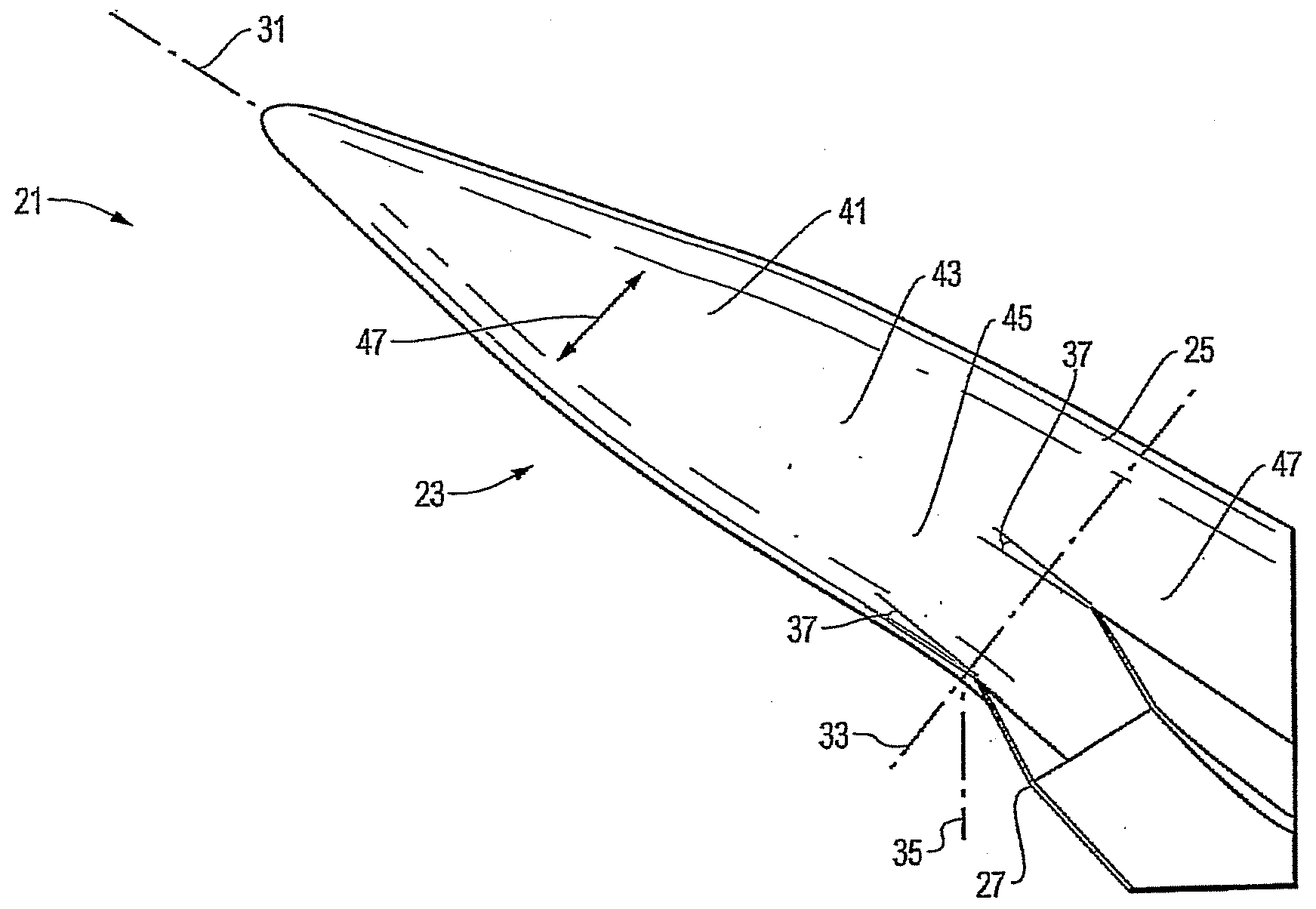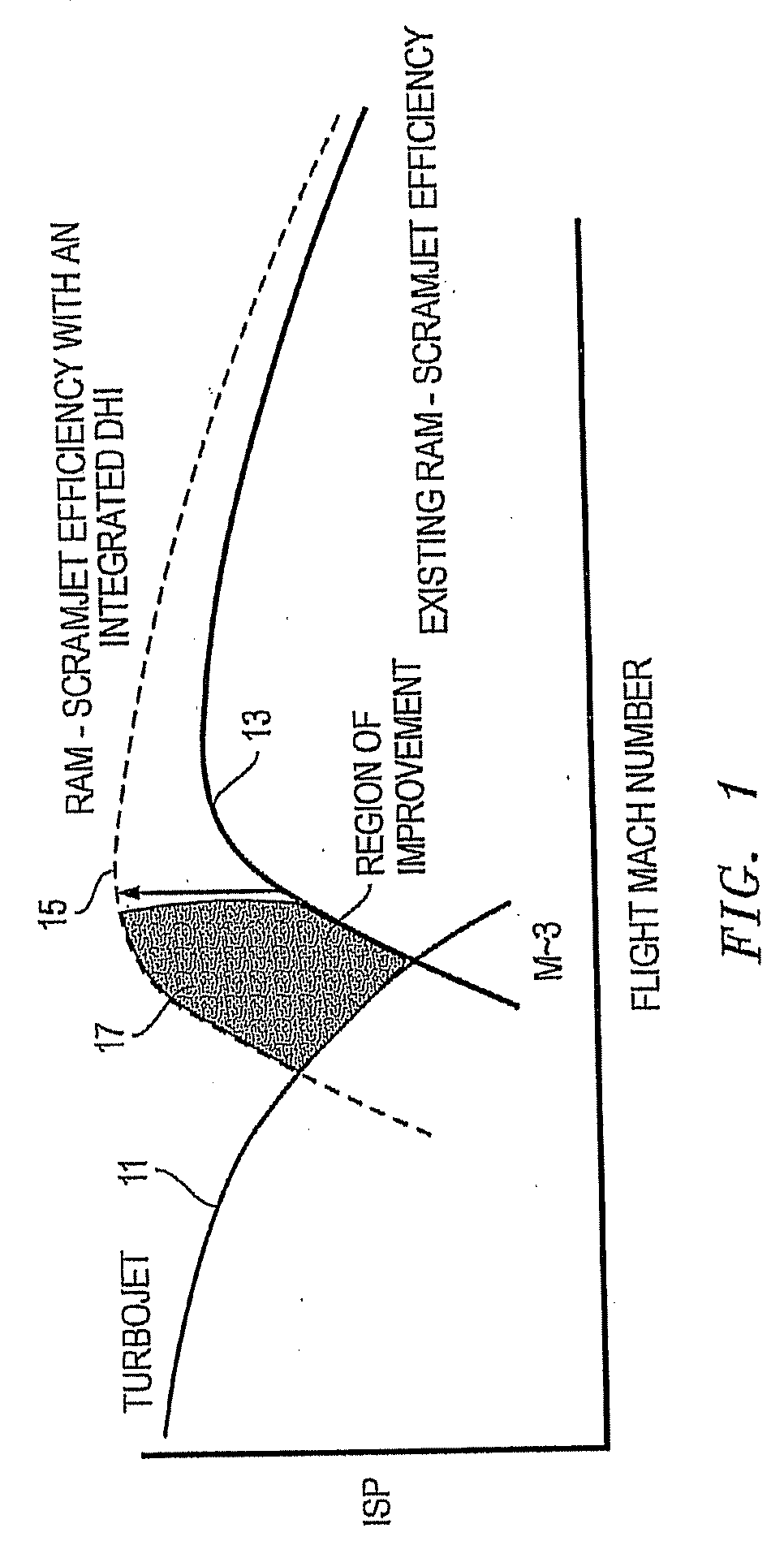Apparatus and method for processing airflow with flowfield molded hypersonic inlet
a flowfield molded and airflow technology, applied in the field of aircraft engines, to achieve the effect of reducing penalties, improving transonic drag, and favorable air flow characteristics
- Summary
- Abstract
- Description
- Claims
- Application Information
AI Technical Summary
Benefits of technology
Problems solved by technology
Method used
Image
Examples
Embodiment Construction
[0022]Referring to FIGS. 1-8, various embodiments of a system, method, and apparatus for a diverterless hypersonic inlet (DHI) constructed in accordance with the present invention are shown. As shown in FIG. 1, the performance 11 of aircraft with conventional turbojet engines deteriorates quickly as flight speed approaches Mach 3. Similarly, the performance 13 of conventionally configured ramjets and scramjets is also weak at flight speeds in the vicinity of Mach 3. However, a high speed aircraft configured with a DHI constructed in accordance with the present invention has a performance 15 with a significantly enhanced region of improvement 17 over conventional inlet designs. The turbojet, ramjet, and scramjet engine applications for the DHI of the present invention include flight speeds of approximately Mach 2.5 to 10.
[0023]FIG. 2 illustrates an aircraft 21 with one embodiment of a DHI design 23 for processing hypersonic airflow. The DHI 23 extends along the forebody and incorpora...
PUM
 Login to View More
Login to View More Abstract
Description
Claims
Application Information
 Login to View More
Login to View More - R&D
- Intellectual Property
- Life Sciences
- Materials
- Tech Scout
- Unparalleled Data Quality
- Higher Quality Content
- 60% Fewer Hallucinations
Browse by: Latest US Patents, China's latest patents, Technical Efficacy Thesaurus, Application Domain, Technology Topic, Popular Technical Reports.
© 2025 PatSnap. All rights reserved.Legal|Privacy policy|Modern Slavery Act Transparency Statement|Sitemap|About US| Contact US: help@patsnap.com



